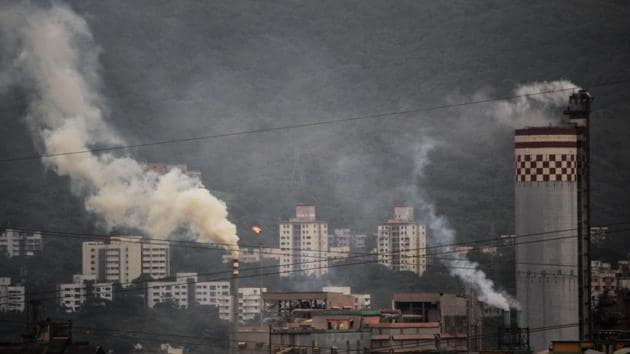Kathmandu: Incidences of forest fires reported across Nepal have led to a surge in air pollution in major cities such as Kathmandu and Pokhara. Air quality has deteriorated significantly, with Kathmandu ranking as the third most polluted city globally this afternoon, recording an Air Quality Index (AQI) of 165.
It was measured 158 in Khumaltar, 175 around the Bhaktapur Cancer Hospital, and 120 in the Ratnapark area and these measurements are highly concerning given public health.According to environmental activist Rajan Thapa, an AQI above 100 poses a severe risk to human health.
An AQI value of 50 is considered good for public health, from 51-100 moderate, 100-150 unhealthy and it is highly hazardous if measured 150-200.Typically, Nepal experiences approximately 2,500 incidents of wildfires annually, with a majority (80 percent) occurring between the last week of February and the last week of May.
The period from mid-March to mid-May is particularly vulnerable, accounting for 60 percent of reported forest fires.The main contributors to air pollution include carbon emissions from vehicles, dust from road repairs and construction, emissions from industries and brick kilns, poor waste management practices, and forest fires.
Addressing these issues systematically is needed, he asserted.Promoting the use of environmentally friendly vehicles can significantly mitigate air pollution, according to Thapa.However, meteorologist Barun Paudel warns that the upcoming week is unlikely to see rainfall, posing challenges in containing forest fires.
A potential heat wave could exacerbate dry conditions, further increasing the risk of wildfires.Wildfire expert Sundar Sharma said that the surge in forest fires has worsened air quality in major towns like Kathmandu. Wildfire smoke poses serious health risks, including eye problems.
According to the United States-based National Aeronautics and Space Administration (NASA), Nepal reported forest fires at 130 locations across the country on Monday.Sharma shared about a concerning trend of increasing environmental dryness in Nepal, with a notable rise in forest fires over the past three days. “Control measures for forest fires are required to tackle air pollution,” he asserted.
Similarly, Spokesperson of the Forests and Environment Ministry, Badri Raj Dhungana, said lack of state’s adequate investment, awareness and inter-bodies coordination for the improvement of air quality are reasons behind such problems.
He underlined, “Air pollution is increasing in lack of provision of environmental impact assessment in course of constructing different projects, lack of effective implementation of rules related to garbage management and environmental standard.”Dhungana pointed out the need of forwarding publicity activities to control forest fire was necessary as pollution is increasing due to forest fire, he stressed.
Chest specialist, Dr Niraj Bam, said air pollution has been posing short-term and long-term health problems on human health.Respiratory diseases, common cold and cough, asthma, lung cancer, high blood pressure, paralysis and heart attack are also caused by air pollution.People suffering from such health problems should be alert during the air pollution, he mentioned.
Chest Specialist Bam urged one and all to limit themselves inside the house if possible during pollution hour, to use mask compulsorily if it is urgent to go out and avoid early morning walk as the air is more polluted in the morning.Management Action Plan for Kathmandu Valley, 2076 BS, an AQI of more than 300 is considered as a disaster.
In order to prevent this disaster, it has been mentioned in the action plan not to burn garbage, to increase the use of brooms and vacuums to clean the roads, and to issue public notices to children, senior citizens and patients to take special precautions.
Similarly, in the National Environment Policy, 2076 BS, it is mentioned that national standards related to prevention of water, air, soil, sound, electricity, magnetic waves, radioactive radiation, hazardous chemical pollution will be prepared and implemented in order to reduce pollution.According to the strategy, air, water and sound quality will be mapped by establishing and operating quality measurement centers in areas at risk of pollution including major cities and industrial establishments.
It is mentioned in the policy that environment-friendly technology will be implemented to manage polluted smoke, dust, and water emitted from industries and other businesses sectors.
News Source: Rashtriya Samachar Samiti
